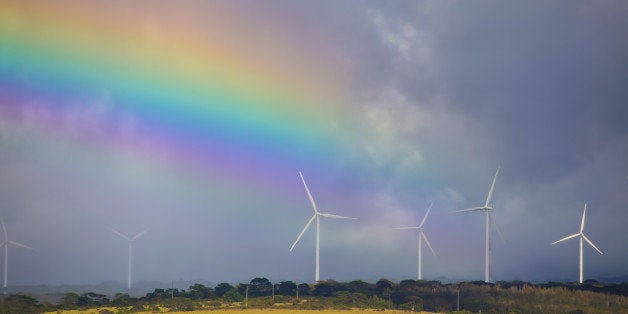
In his 19th-century curmudgeon's classic, The Devil's Dictionary, Ambrose Bierce defined a plan as "the best method of accomplishing an accidental result." When the EPA released its "Clean Power Plan" this month for reducing carbon pollution from power plants, the agency was clear about the results it expects by 2030: Cutting carbon pollution from the power sector to 30 percent below 2005 levels, while also reducing other air pollutants (which by themselves cause thousands of premature deaths) by 25 percent.
Maybe you've heard that this plan is momentous -- a real game changer. Or maybe you've heard that, by itself, it's not nearly tough enough to get us where we want to be by 2030. Actually, both of those things are true. This plan really is a big deal and it's the payoff for years of hard work by dedicated activists. And, yes, it can and should be made even stronger -- and we're going to keep working to make that happen. Because the plan focuses on action at the state level, the Sierra Club is particularly well positioned to do that, too.
So, kudos to the EPA. But you know what? We've already seen some important results from this plan that -- if not quite "accidental" -- were by no means a sure thing, either.
Because President Obama is walking the walk on his 2009 Copenhagen pledge to reduce emissions, U.S. international credibility on climate action was boosted overnight. Most notably, we had the first indication ever from China that it was considering capping its own carbon emissions -- an announcement that came the day after the EPA rolled out its plan. An important climate summit is happening in Paris next year, and this plan puts the U.S. in a better position to help secure an agreement.
Here at home, the plan has left the fossil-fuel lobby (and the politicians who take their marching orders from the Koch brothers) flailing for a credible response. Many cited a discredited report from the Chamber of Commerce that wasn't even based on the EPA's actual plan. Apart from the Tea Party choir, their sermons fell on deaf ears.
Meanwhile, the plan has drawn considerable support from non-fossil fuel industries and businesses, including some utilities. I think there are at least three good reasons for that. First, the EPA bent over backward to make its plan fair and flexible. Second, the reality of climate disruption has long since been accepted by businesses that can already see its effects on their bottom lines. Third, as the EPA's own analysis shows, these standards not only are a cost-effective response but also will generate new economic opportunities and thousands of jobs.
Most exciting of all has been the response of those who will be most affected by this new plan: the American people. Overwhelmingly, that response has been positive. Polls (including one a week ago from The Wall Street Journal and NBC News) have found two out of three Americans supporting the new standards. Best of all, in at least one poll, a majority stuck to that view whether they were Democrats, Republicans, or independents.
But, getting back to long-term results, do I think that by 2030 we will achieve the results the EPA is aiming for with this plan? No. I think we'll do far better. By 2030, clean, renewable energy will be playing a much bigger role in our economy than the EPA is guessing, and that transformation will multiply the already significant public health, economic, and climate benefits we're expecting from these carbon pollution reductions.
Should that be called an accidental outcome? If so, then it's a happy one.
